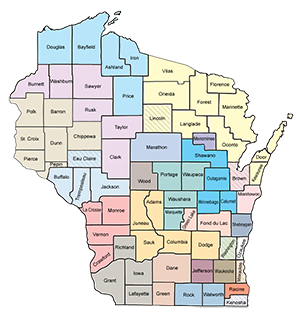The federal budget process–which includes the appropriations process to distribute federal funds annually–is incredibly complex. This is your primer to the budget process, which follows the steps and procedures outlined below.
Step One: The President’s Budget Request
The annual budget process begins when the President submits to Congress a detailed budget request for the coming federal fiscal year (FY), beginning October 1 each calendar year, prepared by the Office of Management and Budget (OMB). The President releases his budget to Congress by the first Monday in February.
The President’s budget request primarily does three things, it:
- Recommends to Congress an overall federal fiscal policy with three main components: how much money the federal government should spend on public purposes, how much it should take in as tax revenues, and how much of a deficit/surplus the federal government should run (the difference between spending and revenue);
- Outlines the budget request lays out the President’s relative priorities for federal programs — how much the Administration believes should be spent on defense, agriculture, education, health, etc.; and
- Recommends to Congress changes to spending and tax policy.
The President’s budget includes recommended funding levels for “discretionary” (or “appropriated”) programs–including Head Start, K-12 education, and childcare–for which funding levels must be determined each year in order for the programs to continue operating. Over half of federal spending if for “mandatory” programs, like Social Security and Medicaid, that are not controlled by the annual appropriations process and do not need to be renewed each year.
Step Two: Congressional Consideration and Approval
Congress is not required to adopt any of the President’s budget requests or recommendations. Both the House and Senate Budget Committees hold hearings on the President’s budget request and then they adopt a concurrent budget resolution that establishes aggregate spending and revenue levels for the entire federal budget as well as sets the overall limit on all discretionary spending in the next FY appropriations bills (there are 12 bills–one for each appropriations subcommittee).
After the House and Senate Budget Committees agree on a budget resolution which provides the framework for spending allocations, then the House and Senate Appropriations Committees determine specific discretionary funding levels for appropriated programs.
General Path of Congressional Appropriations to Determine Discretionary Spending Levels
- First, the House and Senate Appropriations Committees hold hearings to listen to constituents’ concerns and the Administration’s priorities.
- Next, the full Appropriations Committees make suballocations from the overall discretionary spending level to their 12 subcommittees.
- Then, the 12 House and 12 Senate subcommittees each create a draft “mark-up” of its individual subcommittee bill. The mark-up reflects the subcommittee’s priorities and includes draft report language which accompanies the bill explaining priorities and giving direction to federal agencies.
- Following the mark-up, each subcommittee votes on a final appropriations bill proposal and passes this on for the full House or Senate Appropriations Committee to consider. The full Committees may make changes to the individual subcommittee bills before voting and approving the bills.
- Once the full House or Senate Appropriations Committee approve each subcommittee bill, they each send one appropriations bill (which includes all 12 subcommittee bills) for consideration and action on the House or Senate floors.
- Next, House and Senate members are appointed to a Conference Committee to come to consensus on differences in the House and Senate versions of the appropriations bill by developing a compromise bill.
- Once consensus is made in the Conference Committee, the House and Senate vote on the final bill.
Step Three: Back to the President to Sign into Law
After the House and Senate have both voted to approve the final appropriations bill, Congress presents the bill to the President. The President can either sign or veto the bill. If the President signs the bill, it becomes law; if the President vetoes the bill two-thirds of Congress must vote to override the veto. If the House and Senate do not override the Presidential veto, they must address the President’s concerns and then resubmit the bill to the President for the President’s signature.
The President’s signature completes the appropriations process until it begins again for the next fiscal year.

